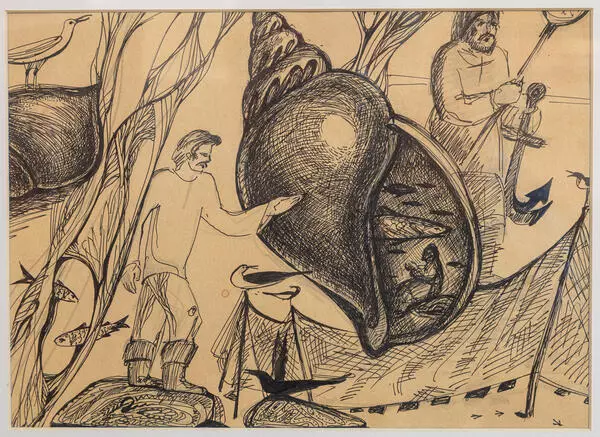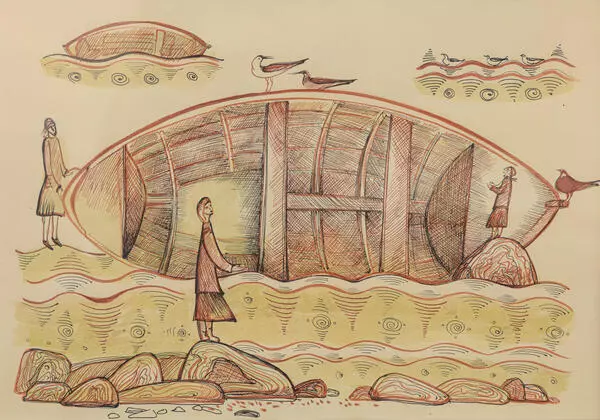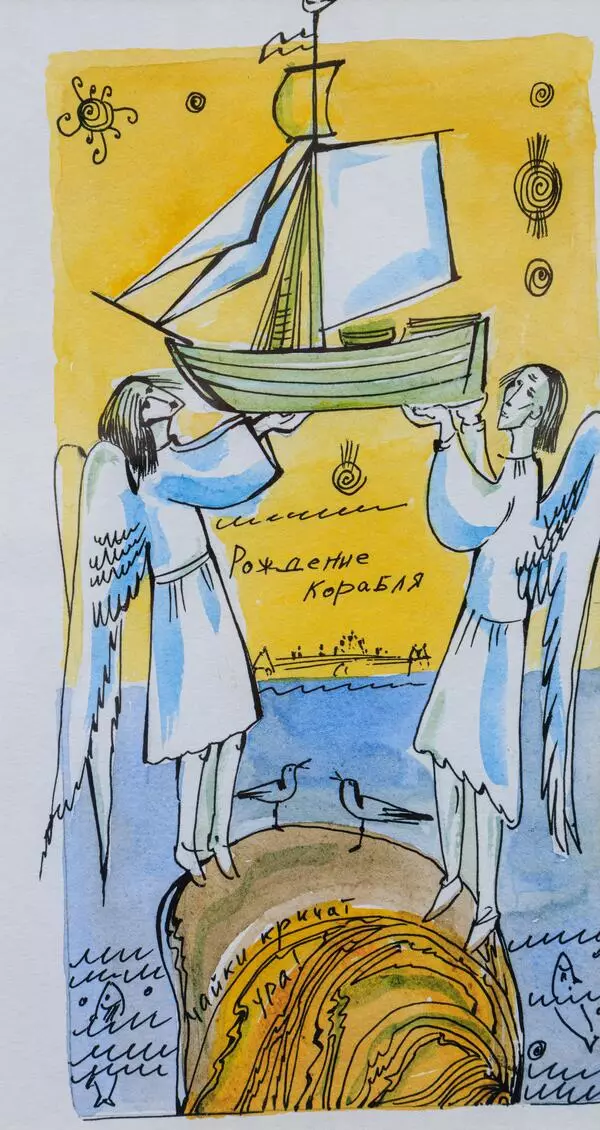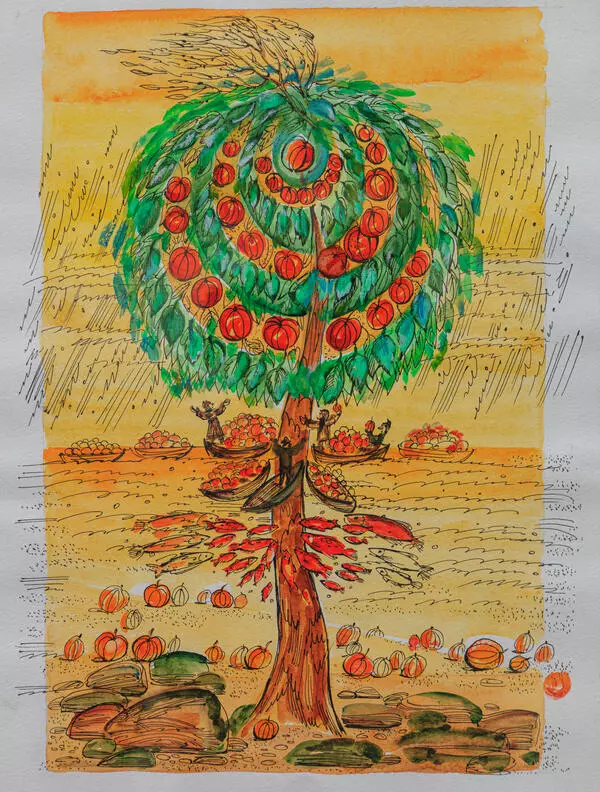The drawing ‘Pomorye’ is part of a series of works by Ekaterina Sedacheva, which are dedicated to the culture and life of the Pomors. The artist depicted women who were waiting for their husbands to return from the sea. Pomor men often went to sea for a long time. They fished, hunted walruses and seals, and got pearls. Not everyone returned home. The dead were said to have been ‘taken by the sea.’
While the husband was absent, the woman became the head of the family. She was called a ‘bolshuha’ (from ‘bolshoy’ meaning ‘big’). The woman could use money as she saw fit and take charge of all household issues. If necessary, she went to sea herself. Many Pomor women knew how to steer boats and deal with fishing equipment.
Women watched the weather every day. If it began to change and a storm was about to come, they carried out a ritual and ‘fed’ the sea. It was believed that the ritual could appease the storm. Moreover, Pomor women often sang the so-called ‘waiting’ songs when they went to the shore. The women told how they missed their husbands, fathers, and brothers in these songs. They also expressed wishes that the sailors would return home soon.
The artist Ekaterina Sedacheva was born in 1960 in the village of Pertominsk, Primorsky District, Arkhangelsk Oblast. In 1978, she graduated from the Lomonosov School of Bone Carving in the village of Lomonosovo, and 10 years later she finished the Abramtsevo Art and Industry School named after Viktor Vasnetsov in the town of Khotkovo near Moscow. After that, Sedacheva taught at Art and Pedagogical Lyceum No. 35 in Arkhangelsk, created works carved out of bone and painted, especially in the Mezen painting technique.
Now the artist creates graphic works with ink, watercolors and pencils, illustrates the works of northern writers, including the famous storyteller Stepan Pisakhov.
While the husband was absent, the woman became the head of the family. She was called a ‘bolshuha’ (from ‘bolshoy’ meaning ‘big’). The woman could use money as she saw fit and take charge of all household issues. If necessary, she went to sea herself. Many Pomor women knew how to steer boats and deal with fishing equipment.
Women watched the weather every day. If it began to change and a storm was about to come, they carried out a ritual and ‘fed’ the sea. It was believed that the ritual could appease the storm. Moreover, Pomor women often sang the so-called ‘waiting’ songs when they went to the shore. The women told how they missed their husbands, fathers, and brothers in these songs. They also expressed wishes that the sailors would return home soon.
The artist Ekaterina Sedacheva was born in 1960 in the village of Pertominsk, Primorsky District, Arkhangelsk Oblast. In 1978, she graduated from the Lomonosov School of Bone Carving in the village of Lomonosovo, and 10 years later she finished the Abramtsevo Art and Industry School named after Viktor Vasnetsov in the town of Khotkovo near Moscow. After that, Sedacheva taught at Art and Pedagogical Lyceum No. 35 in Arkhangelsk, created works carved out of bone and painted, especially in the Mezen painting technique.
Now the artist creates graphic works with ink, watercolors and pencils, illustrates the works of northern writers, including the famous storyteller Stepan Pisakhov.










